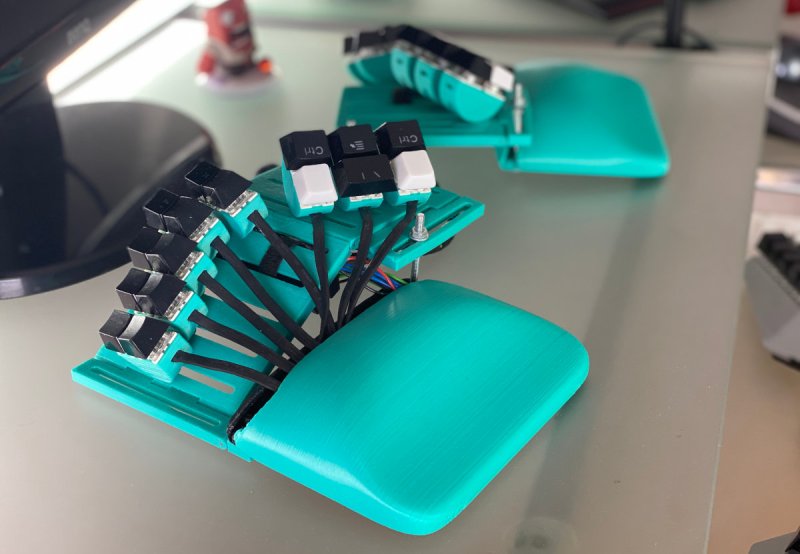So you’re tired of rectangular, brick wall-staggered keyboards and want to go split and/or ergo. But how? Which style? What do? Here’s what you do: you build one of these here LHM Morph boards and customize the crap out of it, because that’s what it’s for.
So what is this thing, anyway? Is it a even a keyboard? Well, as long as you can press switches and send key commands to a computer, it certainly smells like a keyboard to us. Now that we’ve gotten that out of the way, what’s going on here is that [LifeHackerMax] has built a highly-customizable version of the LHM, their 26-key split. The LHM Morph can be fine-tuned to nearly any degree imaginable, including the tenting angle. The keys are grouped in modules that can slide back and forth to suit your varying finger lengths. As they are half-round, these modules can also be tilted and rotated until they’re just right.
But the super cool thing about the LHM Morph is the way it goes together — like LEGO. It’s completely modular, and you don’t even have to go split if you’re not ready for that. But all the pieces connect via rods made of copper wire. If you’d like to make one for yourself, the 3D files are up on Thingiverse, and the firmware is on GitHub. Be sure to check out the video after the break.
Does this keyboard remind you of anything? [Peter Lyons]’ Squeezebox, perhaps?
Via KBD #106
















Is this a keyboard?
https://pics.me.me/this-is-bait-3589032.png
awesome
As a backer of the soon-to-be-released Glove80 split keyboard, I love your personal approach on finding what works for you – and giving others inspiration to try as well (now make this as low-pro and travel-friendly as possible and you’ll have a crowd-funding project ;) )
This is so 2022, time to move up a gear..
https://youtu.be/ipf9WiY9c7g
Something I notice in a lot of these alt keys is that all four fingers are given the same number of keys. I’d rather have only the least number of keys for my littlest finger, and more in the pointing finger both hands. I think many find pinky finger mistakes abound, some may use look-and-poke. Like I just had to look at “P” now to hit it, but that is what this all about anyway. Just now I question the same size of keytop for all fingers alike. 2 keys might work for the pinky with smaller scale buttons and spacing.
Sax and flute keys somewhat abide by this in they have less for the fourth finger to do.